October 1, 2020
From the Vault: A Prudence Island Clam Bake, Part II
Following up on last week's post about the origins of the Marconi rig on Herreshoff boats, we go crashing through the archives again for more answers
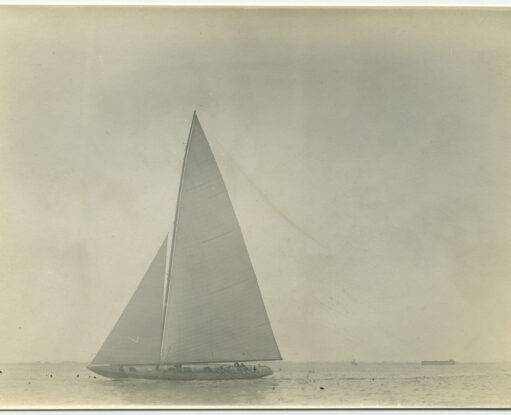

From last week’s post, we know who was at the clam bake on Prudence Island and why they were important figures in HMCo. history. But why did N.G.H. and HMCo. go through the considerable time and expense of re-fitting CAROLINA (HMCo. #721) with a Marconi rig to race against GRAYLING (HMCo. #715)? And what exactly were they trying to prove (or perhaps, sell?) to the visiting yachtsmen?
The Leg-O-Mutton Experiment
These NY50 experimental rig trials were partly an America's Cup test: the trials took place just six weeks before an October 30th proposal from the New York Yacht Club to the Royal Ulster Yacht Club to meet with Marconi rigs in the upcoming Cup races, to be held in the summer of 1920. [1] This story has been described in great detail by Curator Emeritus John Palmieri in Part III of his three-part series on the 100th anniversary of RESOLUTE's Defense and the 13th Challenge. For those who haven't read them yet, go read them! But here's a quick recap: the resumption of the Cup races after the break caused by WWI was announced by the RUYC in early August, 1919, just a few weeks prior to the Prudence Island outing. NYYC returned with that October 1919 offer to race with Marconi rigs instead of gaffs, and to race off Newport instead of Sandy Hook. Perhaps in part the CAROLINA trials were successful enough to convince the NYYC that the rig change would be a good bet. RUYC declined to race with Marconi rigs however, as N.G.H. already knew they would [2] and the Marconi rig was not adopted for the 1920 Cup. (RUYC also declined to move the race to Newport in 1920 - but both things would come to pass in the next Challenge with the start of the J-Class era in 1930.)
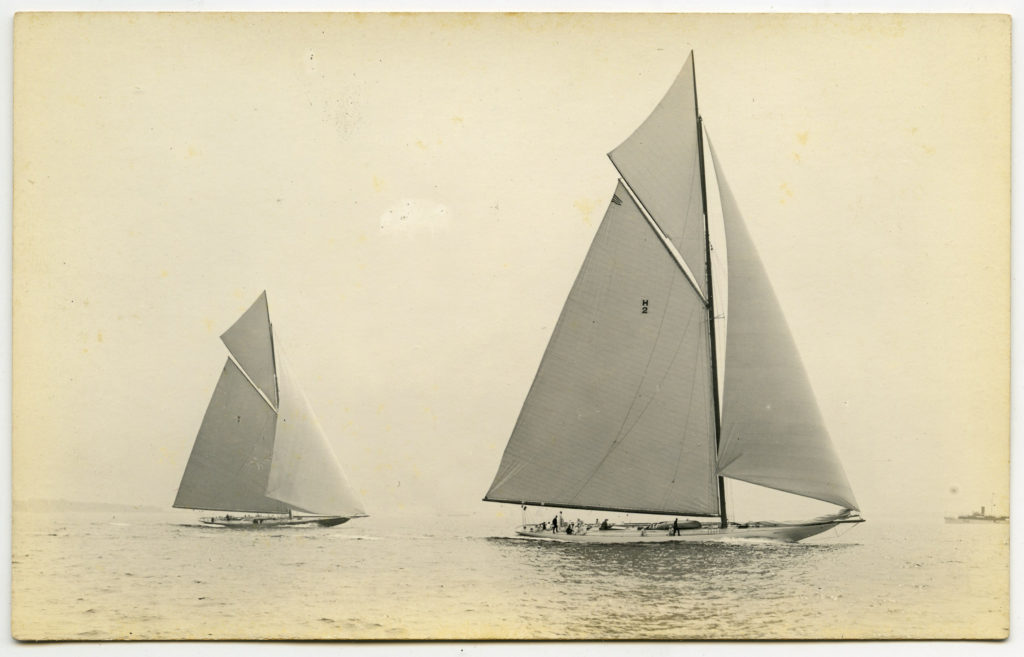
RESOLUTE and VANITIE during the 1914 trials 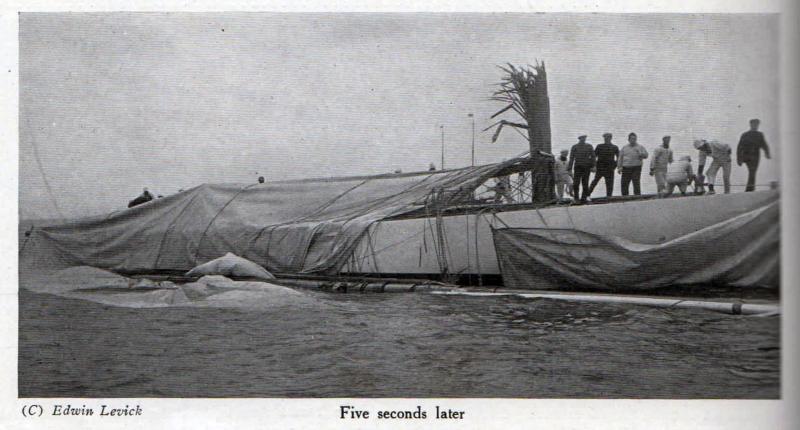
RESOLUTE after her dismasting in the 1920 trials against VANITIE
All of this focus on modifying RESOLUTE's sail plan, whether the existing gaff or to a radical new Marconi (which appeared as a "Leg O Mutton" design in N.G.H.'s drawings) [3], was in response to pressure from the New York Yacht Club to increase RESOLUTE's rating. Because SHAMROCK IV was a larger boat and had a higher rating under the Universal Rule compared to both VANITIE and RESOLUTE, the NYYC worried the selected Defender might win on corrected time against SHAMROCK IV, but not on actual time. They were evidently more concerned about the bad p.r. this would generate for the competition than potentially losing the Cup. Despite all of this, the story ends well for HMCo., and RESOLUTE triumphed in the end. Again, you can read all about the drama of RESOLUTE’s re-rigging, subsequent dismasting and replacement with one of her original steel masts during trials, and then the actual 1920 Cup races here. As to the NY50s, some members of the class did take to the Marconi rig idea and eventually converted a number of the 50's to race as M-boats.
An Alternative Sales Pitch?
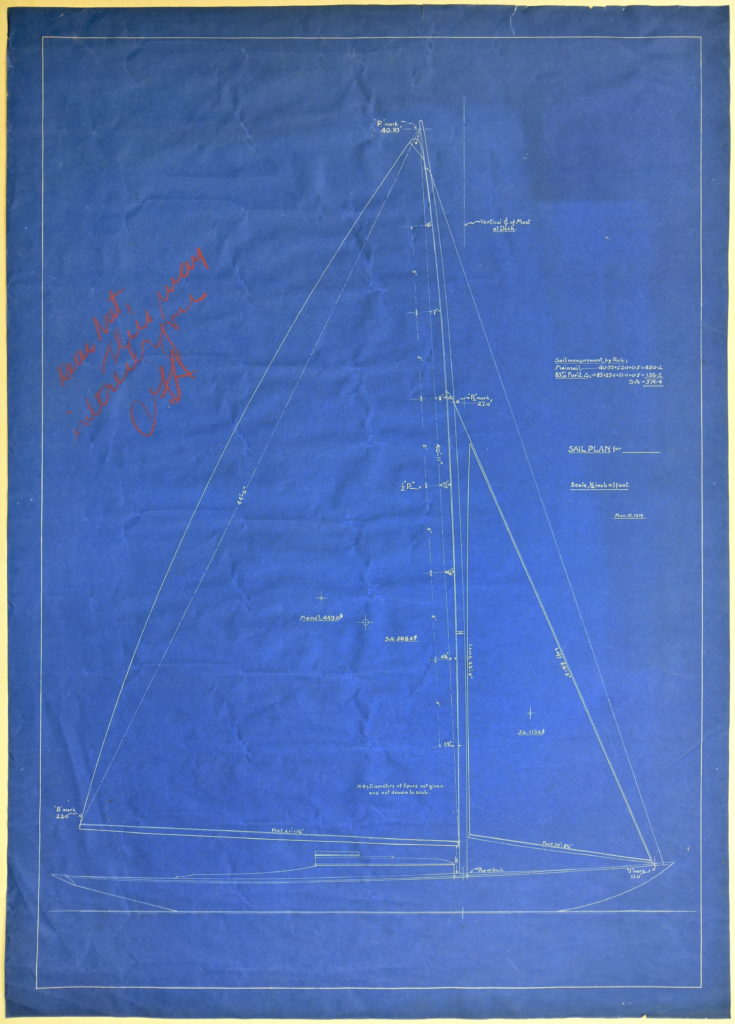
But there is another lesser-known story connected to the clam bake trial and the fall of 1919. While N.G.H. was designing the never-built Marconi rig for RESOLUTE that summer and fall, he was simultaneously experimenting with Marconi rigs for smaller boats. References to Marconi rigs begin appearing in HMCo. correspondence around 1915 and it's possible N.G.H. was experimenting with sketches as early as 1916, though no definitively dated drawings appear until 1919. [4] Interestingly, there is a blueprint of a sail plan for an unidentified Marconi rigged daysailer (not designed by N.G.H.) dated March 15, 1919 in the archives. There is a note in red crayon scrawled on the top left: “Dear Nat, this may interest you / CFA”. CFA is Charles Francis Adams, another RESOLUTE syndicate member, HMCo. shareholder and clam bake attendee. It can only be assumed Adams sent this blueprint to N.G.H. sometime after March, 1919. Was this Adams’ attempt to interest or goad N.G.H. into incorporating the Marconi rig into his designs for the first time, or was this commentary on plans already afoot?
The next Marconi drawing of great interest is a Captain Nat design dated September 8, 1919: eight days before the clam bake. A note in the lower left hand corner in N.G.H.'s handwriting reads "For W.B. Duncan Esq. et al". Lightly penciled below that is a note reading "make 6 [blueprints] for office". The original drawing and one blueprint still survive today, in two different collections. The drawing is a proposal for a SADIE (HMCo. #732) style hull with two options, full keel or centerboard. It also shows two rig options: a traditional looking gaff and, in dotted lines... a curved Marconi rig. W.B. Duncan was a serial HMCo. customer and another eminent NYYC member. Was he present at the clam bake? Whether or not he was there, did N.G.H. have those six blueprints made to pass around to the party while watching the CAROLINA and GRAYLING trials as a sales pitch for a new class with a new rig? It is pure speculation, but the timing and context are intriguing. Though this particular combination was not developed further, the drawing is a fascinating artifact from very particular moment in time.
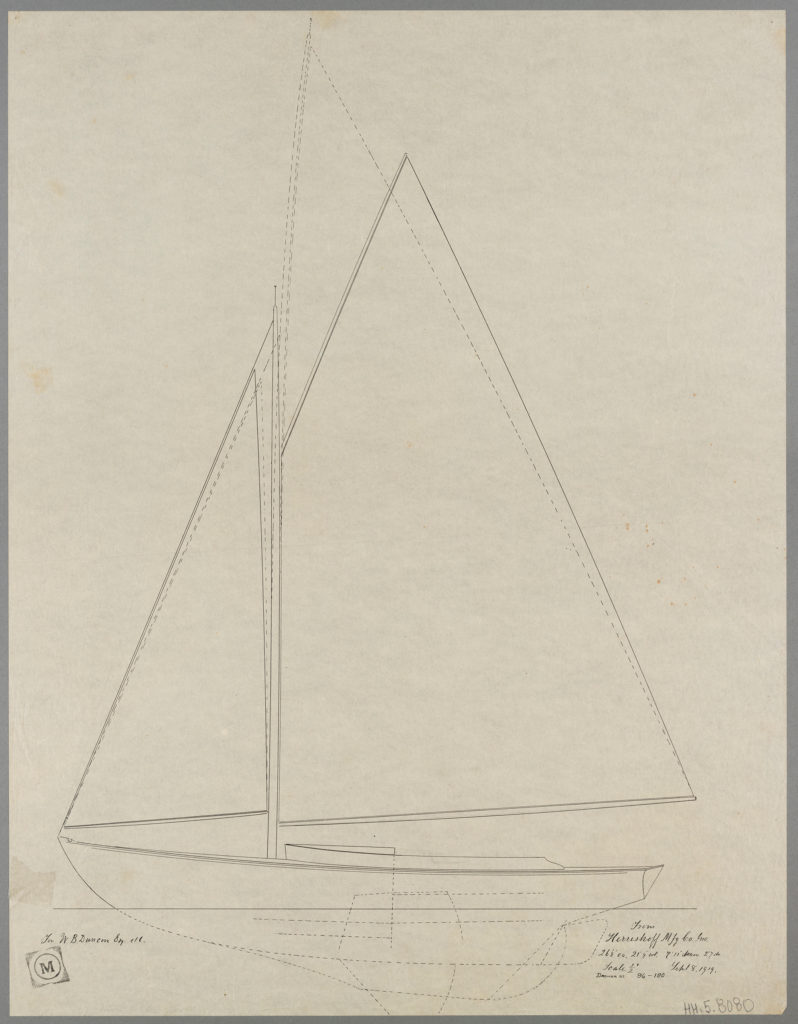
A Final (Vestigial) Note

Despite the fact that the September 8 proposal was not pursued, N.G.H. continued to develop the idea of a smaller racing class with a Marconi rig that fall. In November 1919, a drawing appears that would form the foundations for the first Herreshoff one-design class ever to be designed with a Marconi rig from the start. This time, instead of setting this new rig atop the iconic Herreshoff SADIE-style spoon bow as he had in his September proposal, N.G.H. designed a hull that was a departure in shape and profile. Yes, this is where we have been headed all along: it was the S-Boat! Incidentally, Charles Francis Adams and Ralph N. Ellis (both in attendance at the Prudence Island clam bake) would both commission S-boats (ELLEN, HMCo. #850 and MONSOON, HMCo. #851) during the first year of their production. We don't know who else was there, but the largest group of early S-class adopters were from Marblehead and it is tempting to wonder if there weren't more in attendance on September 16th.
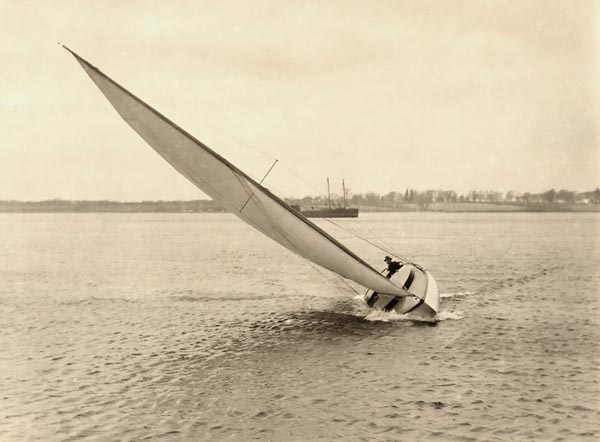
One final note about the shape of these early Marconi rigs on HMCo. boats and that curious bend to the mast. While today we usually picture a straight mast when we hear “Marconi rig,” in the late 1910s, the relative advantages in strength and/or and performance of a curved versus straight mast had not yet been proven. As a result, a curved mast was "customary" in those early days, even on the larger boats like CAROLINA (see photos below). [5] The curve was largely phased out in N.G.H.'s later designs - a straight Marconi mast for CAROLINA, for example, was designed in the winter of 1925 - 1926, and many rules had banned curved masts by 1925. But on the S-Boat it remained, and today the curve is an absolutely iconic element of the S Class profile. We hope that next time you see one in the wild, it brings to mind the last days of the America's Cup gaffers, the NY50s, little SADIE's, gossipy newspaper columns, and autumn clam bakes.
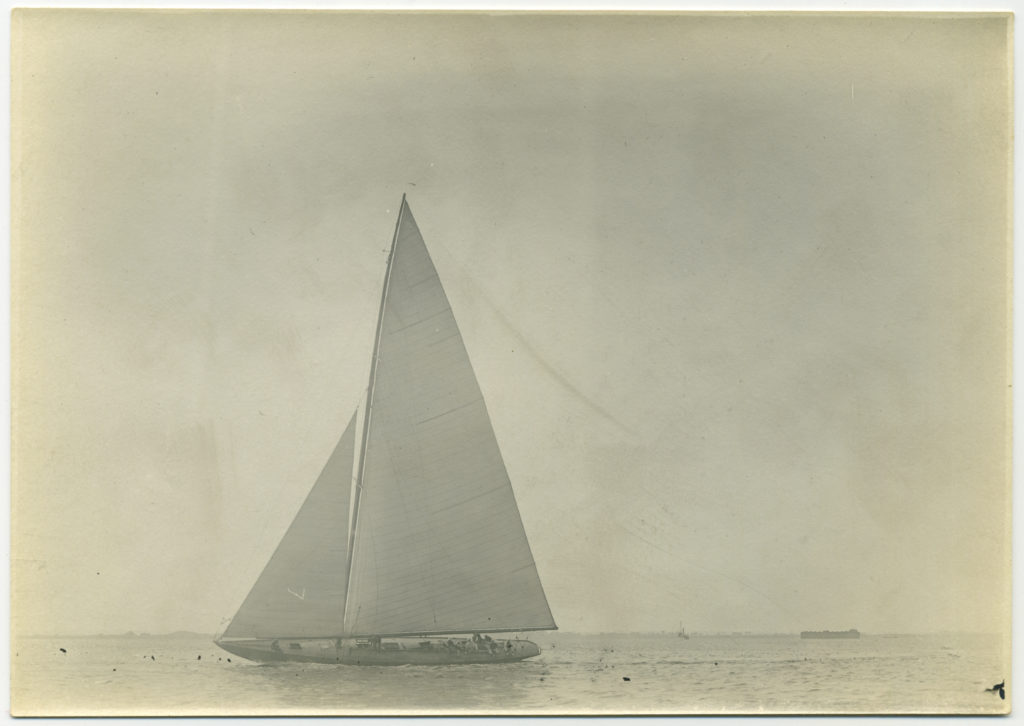
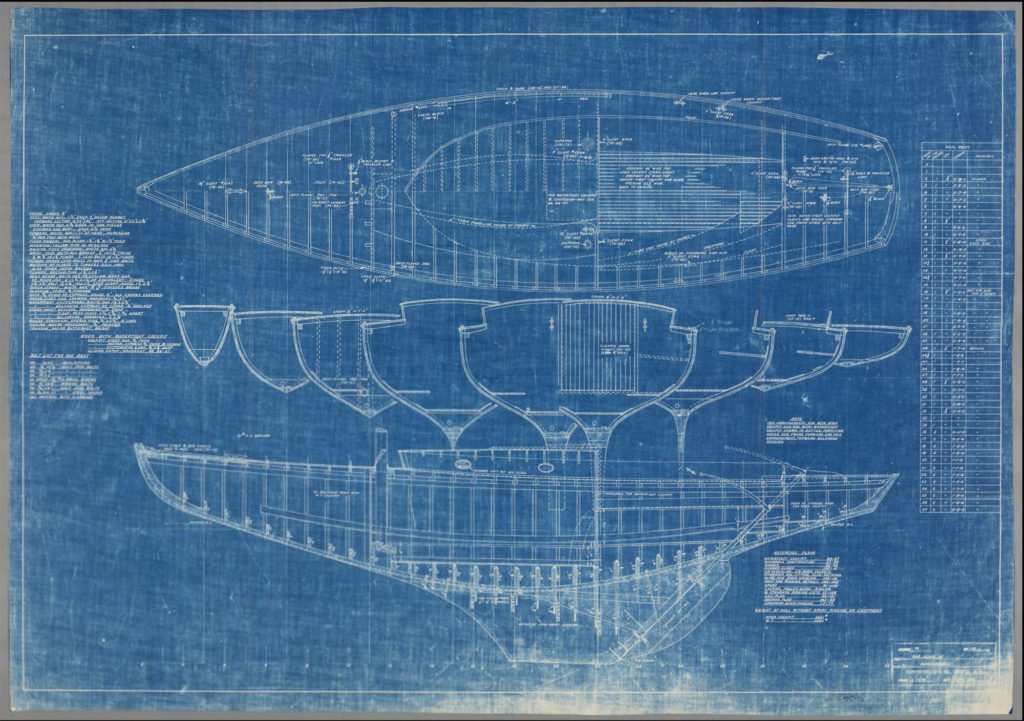
Blueprint of the S-Class plans originally drawn November, 1919; plan courtesy the MIT Museum 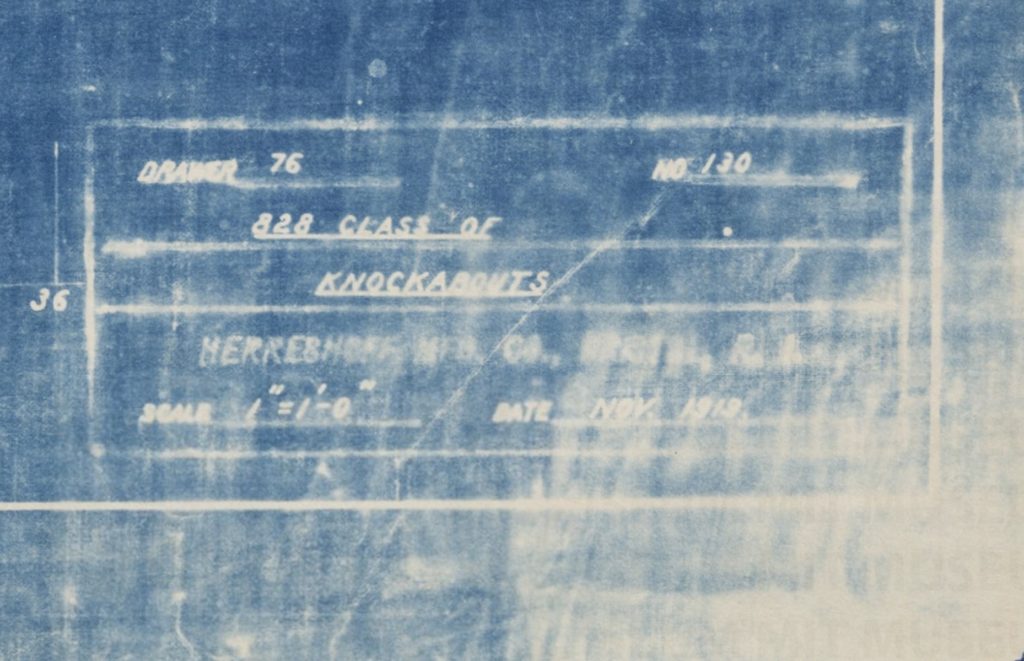
Title block from the plan at left; detail courtesy the MIT Museum 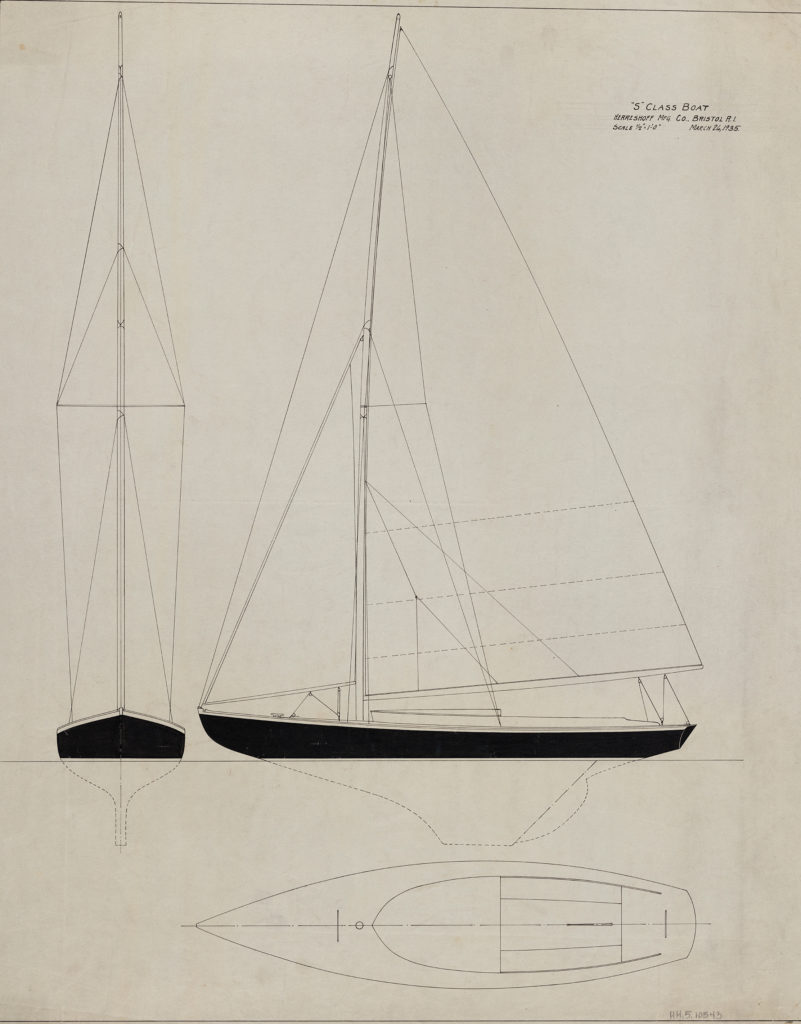
A 1935 profile drawing of S-Class; image courtesy the MIT Museum
[1] “America’s Cup Race Conditions” The Rudder, Vol. XXXVI No.3 Mar. 1920. Pg 33.
[2] Letter from George Cormack to N.G.H., dated October 14, 1919 indicates that designer Charles E. Nicholson would not be re-fitting SHAMROCK IV with a Marconi rig. Confirmed by cable from Nicholson to George A. Cormack dated 27th of October 1919. Archival documents courtesy Halsey C. Herreshoff
[3] “Design for Wood Mast to carry Leg O mutton Mainsail in RESOLUTE (#725)”, N.G.H. Naval Architecture and Engineering Notes Sept. 30, 1919. Archival documents courtesy Halsey C. Herreshoff
[4] Courtesy the Halsey C. Herreshoff archive; data compiled courtesy of the HCR
[5] "Notes From the Week's Log." Boston Globe, September 14, 1919, p. 48.
